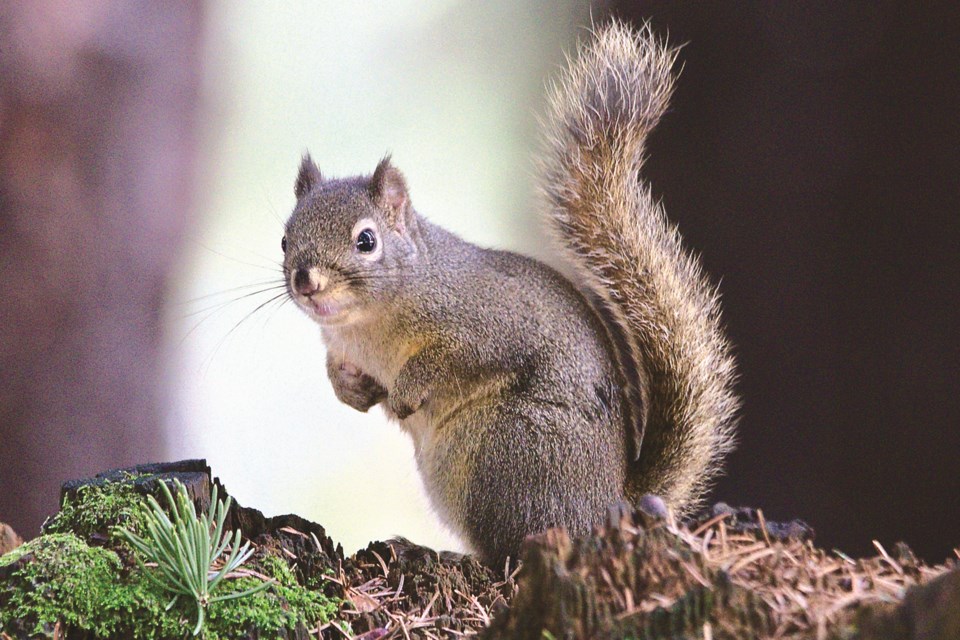You may have heard of Teddy, the orphaned bear cub raised by Myrtle Philip in 1926, but have you heard of Rigor Mortis the squirrel? In an oral history from 1989 about growing up in Alta Lake, later known as Whistler, Louise (Betts) Smith was asked about local character Charlie Chandler, who passed away peacefully on his porch the winter of 1946. Charlie was found frozen and carried to Alta Lake station for a raucous celebration of life, before being taken away by train for burial.
Being a child at the time, Louise remembered this event vividly. “Some of the men got concerned about him, so they hiked back in there and he had just had a heart attack and died in his chair and he was all stiffened up.”
You can read more about Charlie Chandler’s wake on the Whistler Museum blog. Today’s musing centres around what Louise said next. “I knew at that age that it was called rigor mortis because somebody had a squirrel named ‘Rigor Mortis’ and my mother had explained to me what rigor mortis was, and it really wasn’t a nice name for a squirrel.”
How had a squirrel become known as Rigor Mortis, you might ask? We do not know for sure, however the biology of squirrels may give us a clue.
The squirrel commonly seen scampering up and down trees, or making mischief during the day in Whistler, is the Douglas squirrel (Tamiasciurus douglasii). Whistler’s other local, the northern flying squirrel, is nocturnal.
Similar to beavers, rats, and other rodents, the squirrel’s front teeth never stop growing. Douglas squirrels primarily feed on conifer seeds, peeling off the scales of the pine cones to get at the seeds. Douglas squirrels have also been known to eat fungi, fruit, nuts, insects, and other plant material. (Oh, and they love dinosaur candy. I have a vivid childhood memory of watching a Douglas squirrel run out of the house with my hard-earned bag of gummy dinosaurs. The candy was never seen again; the squirrel continued to visit often.)
The saying “to squirrel away” refers to the fact that squirrels are larder hoarders. In mid-to-late summer Douglas squirrels begin stockpiling cones, conifer seeds, and fungi in one or more middens located within their territory. Middens may contain enough food for one or more seasons and squirrels will defend them against competition and theft. The genus name Tamiasciurus references this behaviour, being derived from the Greek work Tamias, meaning animal that hoards food. Additionally, skia means shadow, and oura refers to tail, so this is the genus of tailed shadows that hoard food.
Predators of the Douglas squirrel include pine martens, bobcats, raptors and owls. They can also become prey to domestic cats and dogs. In response to stimuli, such as predation, we often hear about the “fight or flight” mechanism. However, this could be more completely described as “fight, flight or freeze,” bringing us back to Rigor Mortis. Like other squirrels, the Douglas squirrel may have a freeze response when alarmed. For example, if a squirrel has been caught by a predator it may respond by freezing up, becoming completely rigid. Douglas squirrels that have been caught for relocation have exhibited this behaviour.
The freeze response is physiologically much different to rigor mortis—freezing is a mechanism to assist and ensure survival, for one thing. However, it could be perceived as similar to what happens during rigor mortis, where the body becomes rigid. The freeze response in Douglas squirrels may have been how the pet squirrel Rigor Mortis got its name.





